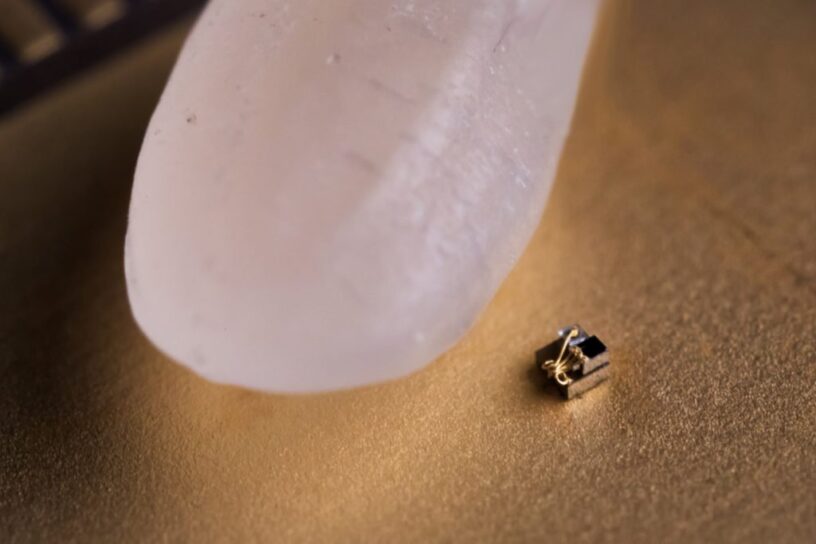Earlier in March, IBM introduced world’s smallest computer boasting Quantum computing and blockchain technology. Well, it didn’t go unnoticed. The University of Michigan has created the tiniest computer that senses variable temperature, which is a tenth the size of IBM’s former record setter. Here is the look down of what this tiny piece of IC does.
ALSO READ: IBM Introduced World’s Smallest Computer; Everything You Need To Know!
World’s Tiniest Computer
The tiniest computer from the University of Michigan senses temperature and is so sensitive that its transmission LED could instigate currents in its circuits. Moreover, the size limitation has forced researchers to get creative to reduce the effect of light. They switched from diodes to switched capacitors.

IBM Device
Furthermore, they had to fight the relative increase in electrical noise that comes from running on a device that uses so little power. The resultant of this can measure changes in the small region, like a group of cells in your body.
ALSO READ: Vodafone Trials World’s First 4G IoT Drone Tracking And Safety Technology!
What Is Its Use?
The scientist has suspected that tumors are slightly hotter than healthy tissue which has been difficult to test until now. The minuscule device could both check the claim and can provide a gauge to effective cancer treatments.
The team also envisions this helping to diagnose glaucoma from inside the eye, monitor biochemical processes, surveillance, oil reservoir monitoring and even to study tiny snails.
ALSO READ: Corti AI Can Detect Cardiac Arrests During Emergency Calls!
Is It A Computer?
Well, it is. It has a full-fledged processor based on an ARM Cortex-M0+ design, but it loses all data when it loses power (pretty much like IBM’s tiny computer), which could be a deal breaker for people who expect a computer to more complete.
This by far has pushed the limits of computing power and shows the nearly invisible computing, not just a significant reduction in size and drastic improvement in the processing power.
BONUS VIDEO
For the latest tech news, follow TechDipper on Twitter, Facebook, Google+, Instagram and subscribe to our YouTube channel.




